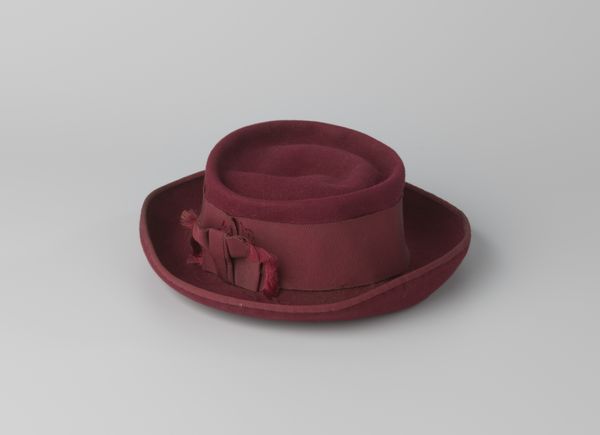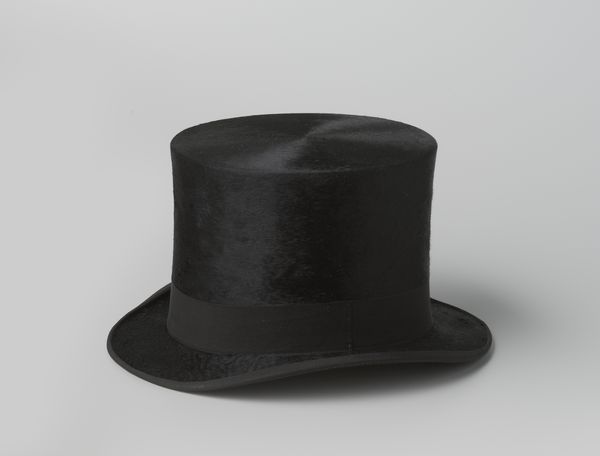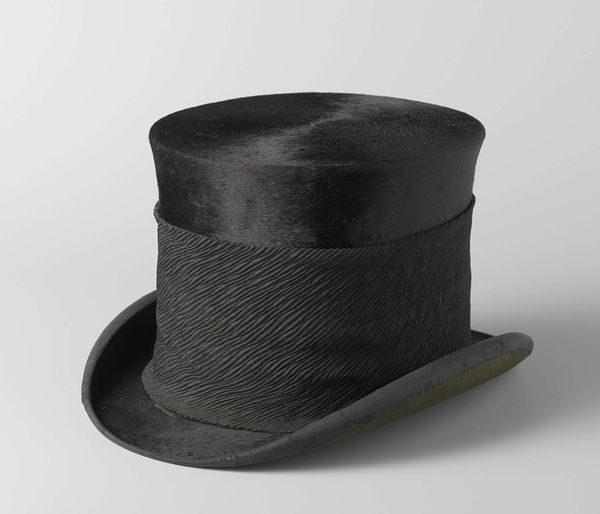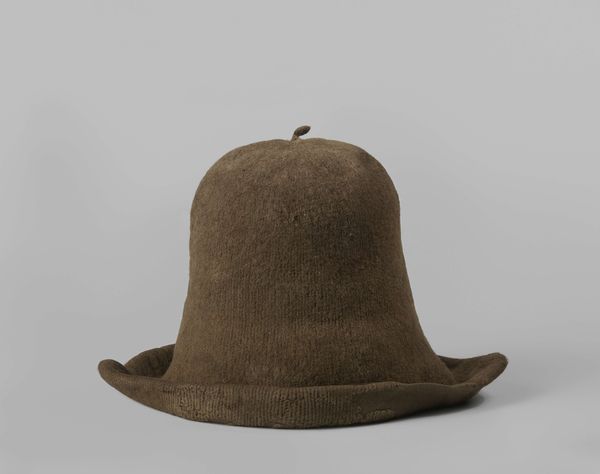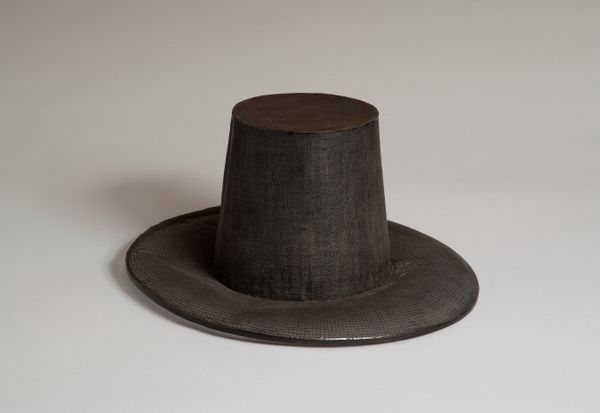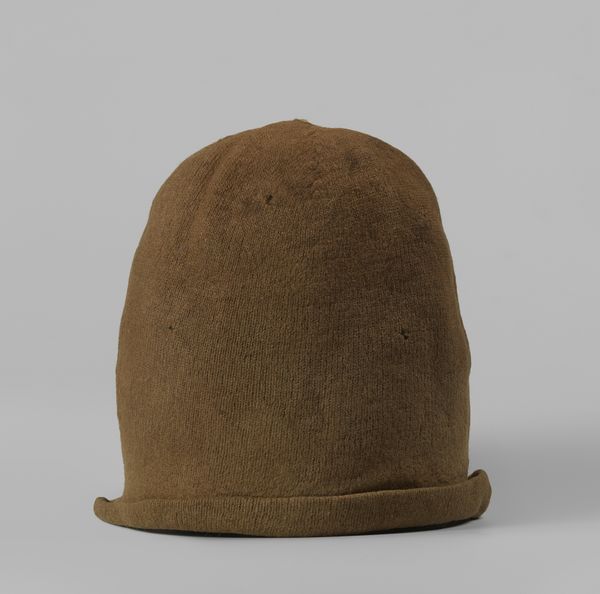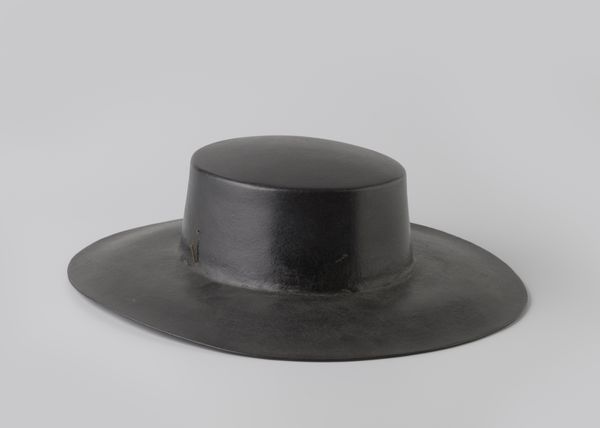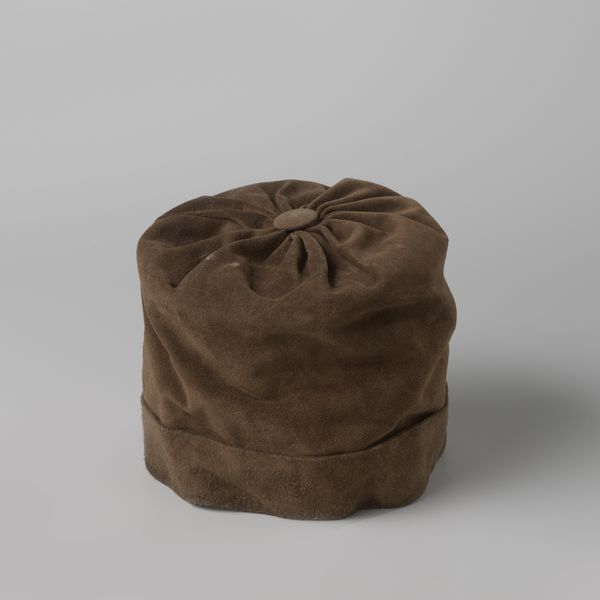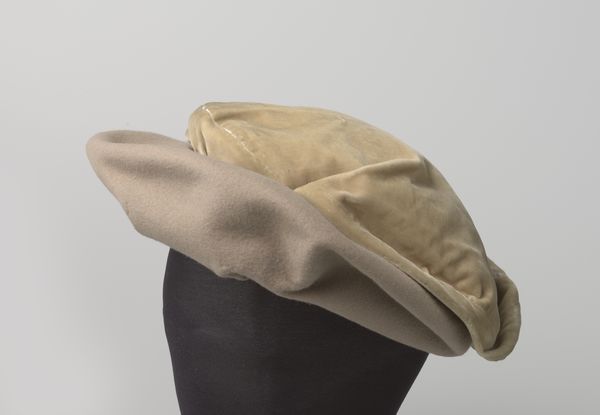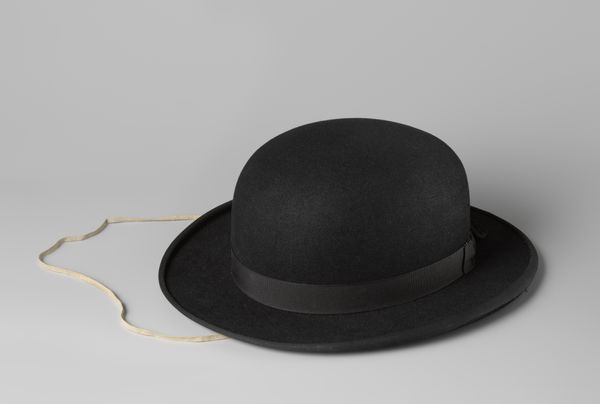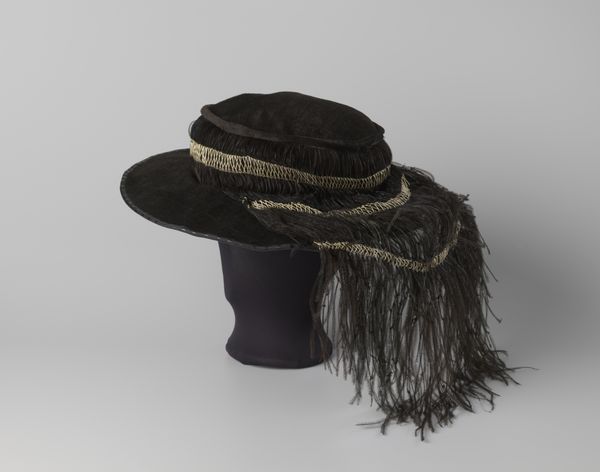
Hoed van bruin vilt met opstaande rand en licht verzonken bol voorzien van bruin grosgrain met strik c. 1938 - 1940
0:00
0:00
photography
#
studio photography
#
photography
#
product photography
Dimensions: height 27 cm, width 25.5 cm, height 4 cm, width 5.5 cm
Copyright: Rijks Museum: Open Domain
Curator: At first glance, I’m struck by its utter stillness. There's a certain quietude, almost melancholic, about the single muted hue. Editor: Indeed. We're examining a photograph of a hat by Rose Descat, believed to be from sometime around 1938 to 1940. The hat itself is fashioned from brown felt, featuring a slightly recessed crown and a grosgrain ribbon tied in a bow. The photo itself appears to be an example of studio product photography. Curator: It's the way the light defines the texture of the felt – subtle gradations that create such depth despite the limited tonal range – that intrigues me. How do you read the photographic composition? Editor: To fully understand a hat, one must understand its historical context, from the means used to felt it to the role that wearing it played for its original owner. It probably would have taken someone a good bit of work to construct, given the state of industrial practices during that time. The grosgrain probably wouldn't be too complex. Curator: Do you not think its success resides precisely in its understated character, its refusal of ostentation? It feels, structurally speaking, remarkably well-resolved – each plane leads the eye to another, subtly guiding you to its formal culmination atop its crown. The circular shape and subdued colors evoke a sense of warmth and closure. Editor: Well, you have to wonder how it played into class structure in France during this period. Was it a mass produced item? For the moneyed classes only? Curator: I admit, I am compelled to examine it on an almost purely aesthetic level. I wonder, regardless of how its making and origins might contextualize it, would its composition nonetheless produce an intrinsic impact? Editor: Undoubtedly the photograph reflects trends in commercial imagery, showcasing commodities with clean lines and even lighting to appeal to the aspirational consumer of the late 1930s, regardless of how it "aesthetically impacts" someone or not. Curator: A fitting image, literally and figuratively, to leave us pondering fashion, form, and history. Editor: Yes, seeing a common item from that era gives insights into manufacture and purchasing in a conflicted period.
Comments
No comments
Be the first to comment and join the conversation on the ultimate creative platform.

